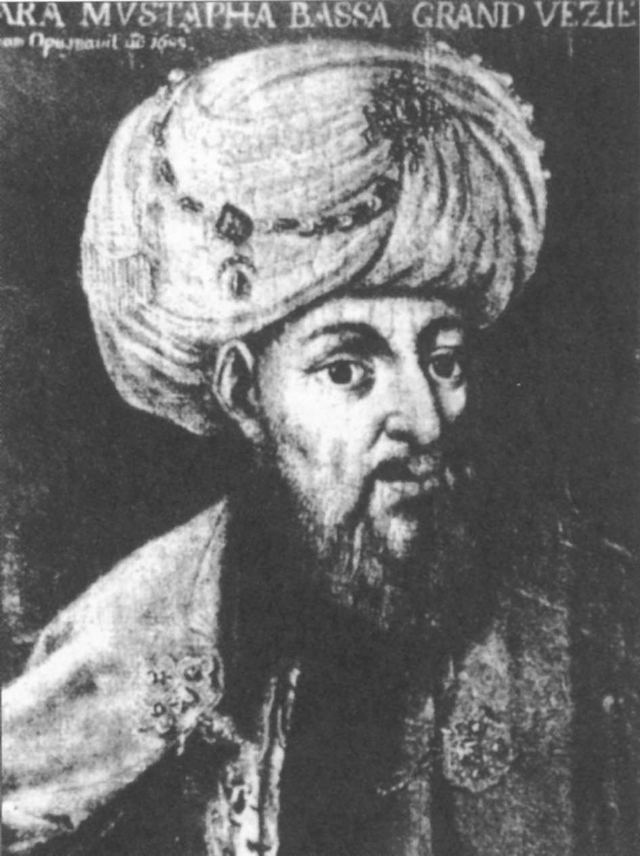Preceded by Gazi Huseyin Pasha Name Kemankes Pasha | Succeeded by Gazi Huseyin Pasha | |
Kemankeş Kara Mustafa Pasha ("Mustafa Pasha, the Archer, the Courageous" in Turkish; 1592 – 31 January 1644) was an Ottoman military officer and statesman. He served as Kapudan Pasha and as grand vizier.
Contents
Early life
Mustafa was an Albanian and born in Avlonya (modern Vlorë in Albania) in 1592. He was an officer in the Janissary corps. His epithet Kemankeş refers to his talent as an archer. He was the deputy (Turkish: sekban başı) of the Janissary commander in 1634 and was promoted to the post of Janissary commander (Turkish: yeniçeri ağası) in 1635. On 17 October 1635, he was appointed Kapudan Pasha (Grand Admiral of the Navy). Nevertheless, he participated in the Capture of Baghdad far from the sea. On 24 December 1638, after the death of the former grand vizier Tayyar Mehmet Pasha during the siege, Sultan Murad IV appointed Kemankeş Mustafa as the new grand vizier, the highest post of the empire next to that of the sultan.
As a grand vizier
Baghdad was conquered the next day, and Kemankeş Mustafa represented the Ottoman side in the consequent peace talks. By the Treaty of Zuhab signed on 17 May 1639, the rough outline for the frontier between modern-day Iran and the states of Turkey and Iraq was laid. Murad IV died on 9 February 1640 and Kemankeş Mustafa continued as a grand vizier during Ibrahim's reign. Ibrahim was a weak sultan, and Kemankeş Mustafa became the de facto ruler of the empire. Using severe methods, he ended the rebellions, balanced the budget, and reduced the number of soldiers. He also used his power the subdue (and even kill) other able statesmen whom he thought to be potential competitors for his post.
Death
Kemankeş Mustafa made many enemies. His most important opposition was a kind of triumvirate in the palace, formed by the valide sultan Kösem (the sultan's mother), a charlatan named Cinci Hoca, and a vizier named Sultanzade Mehmet Pasha. They began to criticize Kemankeş Mustafa vehemently. Although he several times tried to resign, his resignation was not accepted by the sultan. However, the sultan, who was initially pleased with Kemankeş Mustafa, finally dismissed him on 31 January 1644. A few hours later, he was executed.
Legacy
In 1642, Mustafa Pasha converted a Roman Catholic church in Istanbul into a mosque named Odalar Mosque. According to Professor Semavi Eyice, the original church, a Byzantine one, was probably the Monastery of Philanthropos but was converted to the Latin cult and renamed Santa Maria di Constantinopoli during the reign of Mehmed II.

